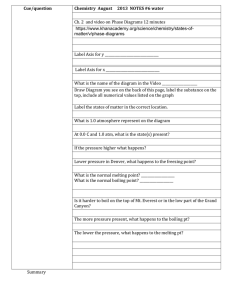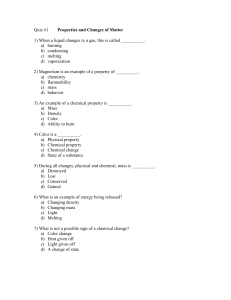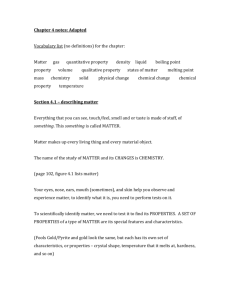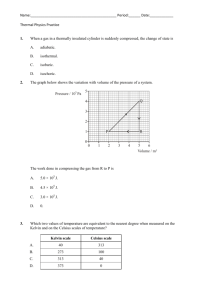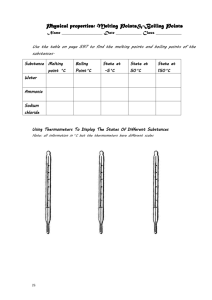Section 4.1 Notes
advertisement
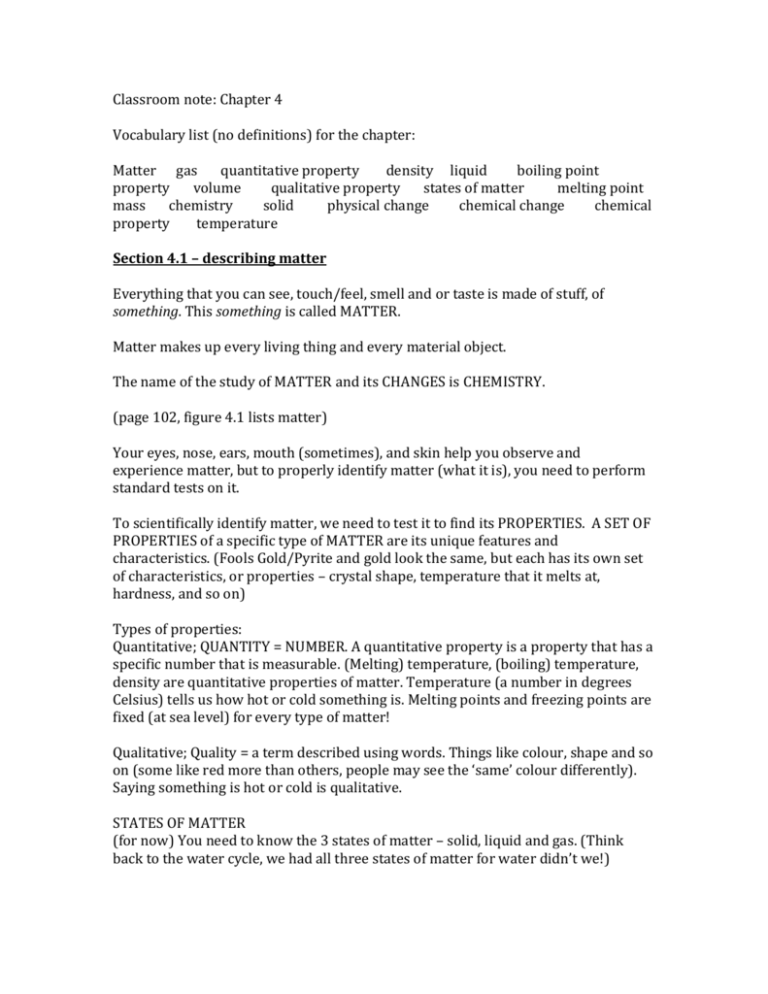
Classroom note: Chapter 4 Vocabulary list (no definitions) for the chapter: Matter gas quantitative property density liquid boiling point property volume qualitative property states of matter melting point mass chemistry solid physical change chemical change chemical property temperature Section 4.1 – describing matter Everything that you can see, touch/feel, smell and or taste is made of stuff, of something. This something is called MATTER. Matter makes up every living thing and every material object. The name of the study of MATTER and its CHANGES is CHEMISTRY. (page 102, figure 4.1 lists matter) Your eyes, nose, ears, mouth (sometimes), and skin help you observe and experience matter, but to properly identify matter (what it is), you need to perform standard tests on it. To scientifically identify matter, we need to test it to find its PROPERTIES. A SET OF PROPERTIES of a specific type of MATTER are its unique features and characteristics. (Fools Gold/Pyrite and gold look the same, but each has its own set of characteristics, or properties – crystal shape, temperature that it melts at, hardness, and so on) Types of properties: Quantitative; QUANTITY = NUMBER. A quantitative property is a property that has a specific number that is measurable. (Melting) temperature, (boiling) temperature, density are quantitative properties of matter. Temperature (a number in degrees Celsius) tells us how hot or cold something is. Melting points and freezing points are fixed (at sea level) for every type of matter! Qualitative; Quality = a term described using words. Things like colour, shape and so on (some like red more than others, people may see the ‘same’ colour differently). Saying something is hot or cold is qualitative. STATES OF MATTER (for now) You need to know the 3 states of matter – solid, liquid and gas. (Think back to the water cycle, we had all three states of matter for water didn’t we!) Solid – Has a fixed shape and volume, does not matter the shape of the container that it is in. Liquid – Has a fixed volume, but takes the shape of the container that it is in (flows). Gas – Has no fixed shape or volume, so it takes the shape of the container it is in, and it fills whatever container you put it in. (page 107 figure 4.6) Page 109 various examples of other properties. Possible lab activity: 1. Boiling point of water/melting point of ice. 2. Solidification point of wax/melting point of wax Questions: Page 110 #1(4), #3(4), #4(6), #5(2), 6(2), #7(3) bonus? Workbook pp 69, 70, 71, 72
